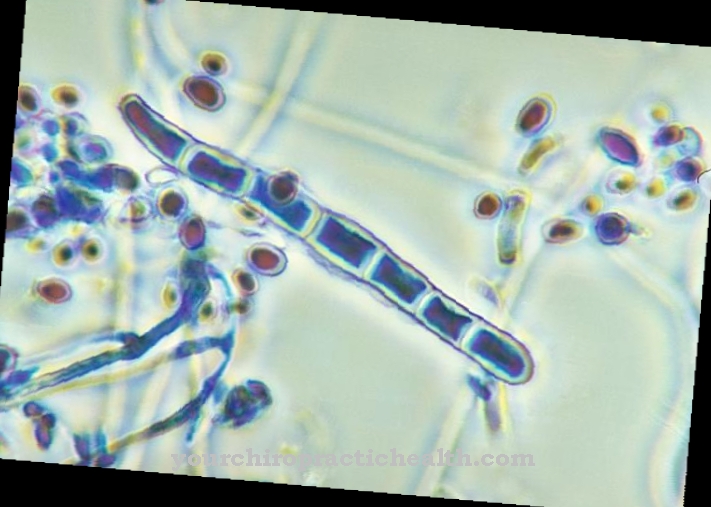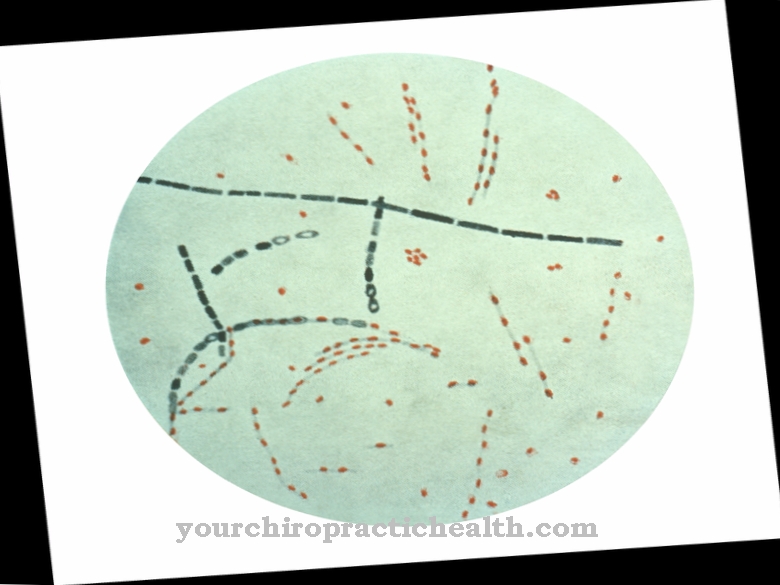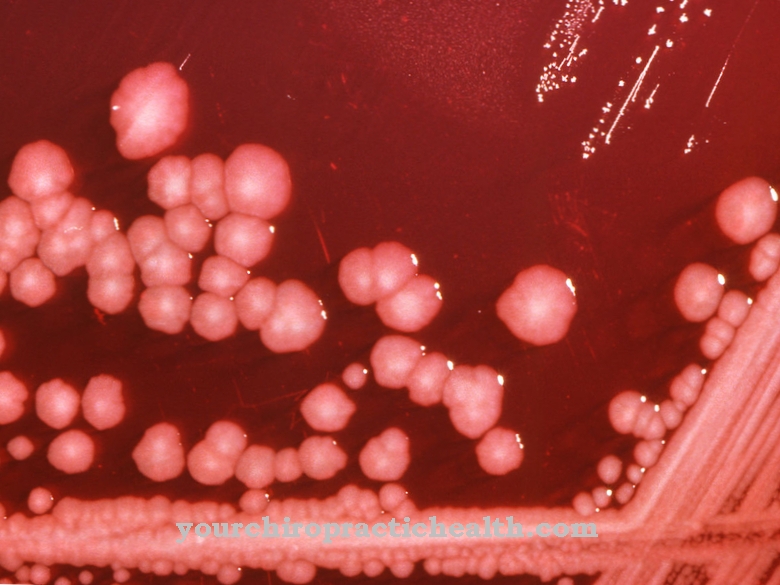Actinomyces are rod-shaped bacteria from the order of the Actinomycetales, which because of their characteristic appearance under the microscope also Ray mushrooms to be named. The bacteria prefer to colonize vertebrates and appear either parasitically or as commensals. An infection leads to actinomycosis of the oral cavity and sometimes the lungs or liver.
What are Actinomyces?
Actinomyzetaceae form a family within the bacterial order Actinomycetales that contains five subgenera. The Actinomyces are a genus of this family. They contain most of the species within the Actinomyzetaceae. All Actinomycetaceae characteristically consist of elongated, branched cells and have gram-positive properties.
Actinomyces have a slightly curved to straight rod shape and are therefore classed as rod bacteria. The diameter of the cells is between 0.2 and 3.0 µm. Although the length can vary, most members of the genus are rather long-threaded and reach lengths of more than 50 µm. Sometimes they also form small, branched mycelia. The bacteria are unable to actively move.
There are numerous representatives within the Actinomyces bacterial genus. Human pathogens are, for example, the species Actinomyces israelii, naeslundii, viscosus and odontolyticus or Actinomyces meyeri and pyogenes. In addition to actinomycosis, the diseases associated with them include purulent inflammation.
Due to their microscopic appearance and their radial filamentous branches, the bacteria of the genus Actinomyces are sometimes reminiscent of fungi. In this context, the descriptive generic name ray mushroom was introduced.
Occurrence, Distribution & Properties
Actinomycetes are largely anaerobic. So they don't need oxygen for their metabolism or survival. While oxygen is poisonous to some anaerobic life forms, Actinomyces is not. Many of the species are facultatively aerobic and can therefore also use oxygen for metabolism. Few Actinomyces have catalase enzymes. A high CO2 or HCO3 concentration in the nutrient medium enables most actinomycetes to grow under aerobic conditions.
Almost all actinomycetes depend on a complex supply of nutrients in order to grow. In most cases, your energy metabolism corresponds to a fermentative energy metabolism. In this energy metabolism, carbohydrates are converted into organic acids.
The preferred habitat of most species corresponds to warm-blooded vertebrates, which are colonized by the bacteria as pathogens or as commensals. A commensal is a living being that lives on food residues and waste products of a host organism and therefore does not damage the host organism. The opposite is the classic parasitic colonization, which deprives the host of substances that he himself needs to survive. Parasitic colonization damage the host accordingly and must be classified as pathogenic. The parasitic pathogenic colonization in connection with the Actinomyces includes above all the infection with the species Actinomyces israelii.
A temperature optimum between 30 to 37 degrees Celsius applies to the growth of Actinomyces. For this reason, living beings with a constant body temperature in this temperature range offer the bacteria the best level. Bacteria from the genus Actinomyces mainly decay for reproduction. This disintegration corresponds to segmentation into short cells. The bacteria do not develop endospores.
Actinomyces have a radiating hyphae structure due to their growth from a point and were mistaken for fungi in the past because of this appearance before they were classified as bacteria. The bacteria are not only transmitted in a species-specific manner, but can be transmitted from one species to another. This transmission is known as zoonosis. Since the bacteria prefer to colonize the gastrointestinal tract and the oral cavity of animals, the transmission to humans is more precisely a zooanthroponosis. In the host's body, some species of Acitomyces can spread hematogenously and thus reach the lungs or liver via the blood. However, this spread of bacteria is a rather rare form.
Illnesses & ailments
Actinomyces can cause various diseases. In most cases, the diseases are mixed infections caused by microaerophilic, facultative anaerobic or anaerobic germs that create anaerobic milieu conditions. Since the anaerobic bacteria are dependent on anaerobic milieus, they create the necessary milieu accordingly. In this context, pus blisters develop in the course of actinomycosis, which in most cases are associated with the formation of fistulas. The abscesses give off sulfur-yellow drusen.
Actinomycosis is a pseudomycosis that is primarily associated with abscesses in the oral cavity, the lungs and the gastrointestinal tract. In the context of actinomkyoses, the accumulations of pus usually spread quickly to the surrounding tissue. The accumulations are surrounded by connective tissue or granulation tissue with a coarse consistency. In addition to abscess formation, actinomycetes can also cause tooth decay or periodontitis.
Actinomycosis is divided into different forms. The cervicofacial form is the most relevant and is primarily caused by Actinomyces israelii. The infection is often based on an injury within the oral cavity, so that one can speak of an endogenous infection. This form must be distinguished from thoracic actinomycosis, which can arise from cervicofacial actinomycosis in the context of saliva aspiration. In abdominal actinomycosis, injuries to the intestines or the female genital area are considered to be the origin. Cutaneous actinomycosis occurs after injuries with saliva transmission. In rare cases, the liver is also affected by the infection. Colonization of the tear ducts is even more rare, but possible.








.jpg)



















